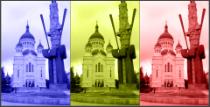
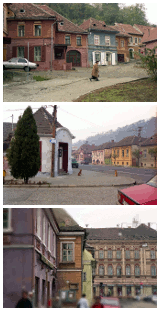 I was in a seemingly other world, when I, somewhat hastily - because I had forgotten the time-changeover completely - had gotten out from the train.
It was completely quiet, without any hectic state.
In Sighisoara, horse-cars drove, not from two - only from one horse drawed, the cars had also no bench, the horses were powerful workhorses.
The few cars on the way in Sighisoara, were altogether new, usually Dacia.
I was in a seemingly other world, when I, somewhat hastily - because I had forgotten the time-changeover completely - had gotten out from the train.
It was completely quiet, without any hectic state.
In Sighisoara, horse-cars drove, not from two - only from one horse drawed, the cars had also no bench, the horses were powerful workhorses.
The few cars on the way in Sighisoara, were altogether new, usually Dacia.
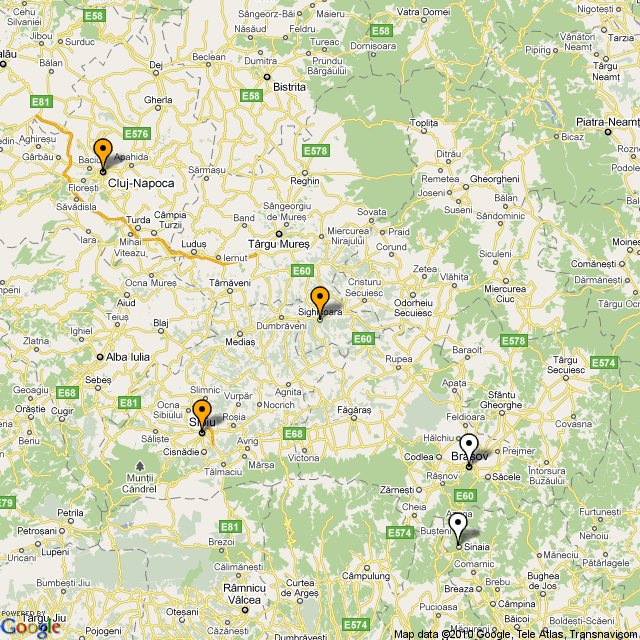
For orange marked points are photo series available on this site.
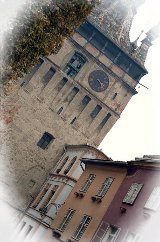 Sighisoara has the biggest medieval ensemble of Romania. The complex includes the entire old part of town and consists of some streets.
After the city had extended over the original defense-installation, 14 defense-towers were originated in the time of the 14. - 16. century. Of those still exist 9.
The landmark of Sighisoara is named 'Stundturm', the other 8 towers carries names of different guilds which contributed to erect the defense-wall and towers.
Sighisoara has the biggest medieval ensemble of Romania. The complex includes the entire old part of town and consists of some streets.
After the city had extended over the original defense-installation, 14 defense-towers were originated in the time of the 14. - 16. century. Of those still exist 9.
The landmark of Sighisoara is named 'Stundturm', the other 8 towers carries names of different guilds which contributed to erect the defense-wall and towers.
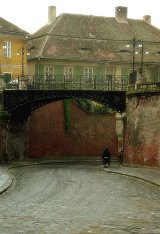 The original capital of Transylvania got the freedom of the city in the year 1241.
In the year 1483, the then pope lent Sibiu the title "defence rampart for all Christians". The reason was the not occupyable city-fortification which the attacks of the Turks hold out successfully.
The old part of Sibiu offers with its splendid citizen-houses, its twisty alleys, its gas lamps and - last but not least - with its fortifications a distinctive flair.
The original capital of Transylvania got the freedom of the city in the year 1241.
In the year 1483, the then pope lent Sibiu the title "defence rampart for all Christians". The reason was the not occupyable city-fortification which the attacks of the Turks hold out successfully.
The old part of Sibiu offers with its splendid citizen-houses, its twisty alleys, its gas lamps and - last but not least - with its fortifications a distinctive flair.
